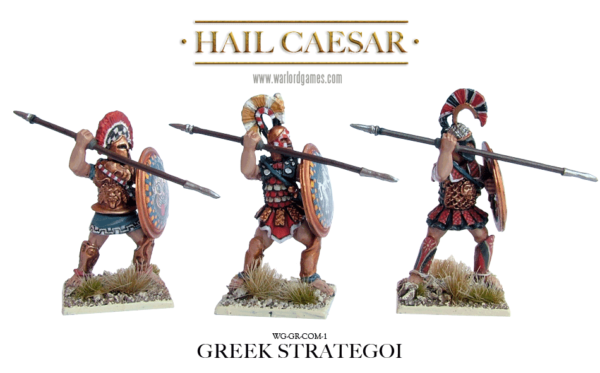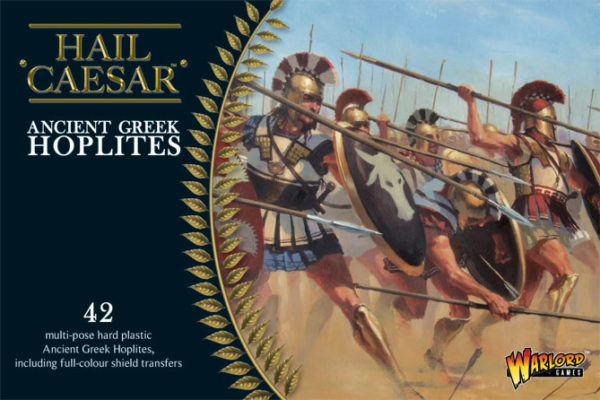New army commanders for your Greek army!
The title of Polemarch (roughly translated as ‘warlord’) became redundant around the time of the battle of Marathon. The duty of commanding an army was handed to the strategoi (literally ‘army leader’).
In Athens we know that 10 strategoi were appointed by vote every spring – whether this practice was followed by other states is debated. A military expedition may have had one or several strategoi present in the army. We know from the accounts of Herodotus that they fought in the main line of battle with their fellow hoplites.
Their equipment would have been very similar to the regular hoplite, but of a higher quality and more extravagant to show off their status and wealth. This would also aid location in the heat of battle.
One Strategoi wears a highly decorated bell cuirass bearing the face of a gorgon, this is based on a Skythian find of Greek workmanship. His helmet has a transverse crest on a Corinthian helmet. His whole panoply is fairly old fashioned and probably a family heirloom.
The cuirass of the remaining two are made form composite materials of painted leather, bronze and Iron. Another depiction of a Gorgon is used for the cord tie on one of the cuirass.
One helmet has a tall crest holder on top of a helmet made of a composite of materials, iron scales over a leather base protect the cranium above a painted bronze face plate. Helmets of this construction are shown in paintings dating to the start of the 5th century.
The last Strategoi has an impressive double crested helmet of Attic style. Some paintings show helmets with 3 crests!
Each pack includes 3 separate heads and arms for maximum versatility.


![greek-strategoi-[2]-8104-p](http://www.warlordgames.com/wp-content/uploads/2012/02/greek-strategoi-2-8104-p-600x442.png)
